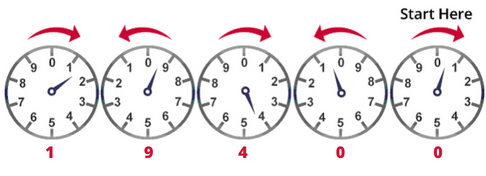How to Read Your Electric Meter
Reading your electric meter isn’t simply a nuisance of “adulting” – it empowers you to make choices about your gas and energy consumption that can result in actual cost savings. Instead of casually bumping the air down to a cool 68 degrees or blasting the heat at a toasty 72, understanding how kilowatt-hours (kWh) are charged each month will help you become an informed consumer. And that can translate to money back in your pocket.
Types of Electric Meters
Your electric meter is typically located on the outside of your home with a specific Electric Service Identifier ID (ESI ID), and the utility company reads this meter each month (often remotely). Your plan often has a fixed or variable cost per kWh, and your monthly bill is determined by how much energy you use times your rate.
16¢ per kWh x 1000 kWh = $160
We’ll explain the different types of meters and how to read them, putting knowledge and power back in your hands. You receive a bill each month from a Retail Electric Provider (REP) like Payless Power, who sells electricity directly to the customer. The power lines and electricity transmission are managed by five main utility companies that serve most of Texas.
Standard Electric Meter
A glass-covered metal meter with dials is a standard electric meter (or analog) and is most commonly recognized by residential energy customers. You’ll see four to six clock-like dials that measure the current coming from the power lines. The gears move faster as more power is used.
While this may be counterintuitive, start with the dial on the right. Record the lowest number the dial has passed (even if it’s almost reached the next number). The dials alternately move counterclockwise then clockwise. The meter below reads 19,400 kWh.
One reading doesn’t provide you the information you need to track your costs or reduce your energy use. You need to compare it to a previous electricity bill or a previous month’s reading. To calculate usage and costs, take last month’s reading (18,000 for example) from this month’s. Then multiply it by the rate you pay to your provider.
| This Month’s Reading | Last Month’s Reading | Energy Used |
| 19,400 kWh | -18,500 kWh | = 900 kWh used this month |
| Energy Used | Rate per kWh | Monthly Bill |
| 900 kWh | x 16¢ per kWh | = $144 |
Smart (or Digital) Meter
Digital meters, also called Advanced Metering Systmes (AMS), are becoming more common and provide an easier way to track energy use for both the electric company and the resident. The Texas Public Utility Commission is working to get smart meters to homes and businesses across the state. Utility companies can get data with more accuracy and respond to outages more efficiently. Plus, the smart meter reduces user error for residents trying to track their energy consumption.
When reading a digital meter, you’ll notice it will cycle through several numbers (date, time, status, etc.). Simply wait until you see a number with the kWh abbreviation to determine your usage. You then subtract that from the previous reading to measure your usage.
| This Month’s Reading | Last Month’s Reading | Energy Used |
| 19,400 kWh | -18,500 kWh | = 900 kWh used this month |
Saving On Your Electricity Bill
Payless Power provides daily alerts to customers (via phone or email) regarding your energy use and balance on your account. That means you can reduce how much electricity you’re using or you can add money to your account to keep your electricity on. By reading your electric meter, you’re taking energy conservation a step further by comparing your usage to last week, last month, or last year’s usage. You can track the difference of setting your thermostat one degree cooler.
To get into the habit of tracking usage and trends that can affect your bill, consider these steps:
- Get a baseline by writing down your usage on your last monthly energy bill.
- Check your meter once a week at approximately the same time.
- Write down the usage consumed each week.
- Note any peculiar reasons for increased or decreased usage from your last reading. See this chart as an example:
Our Home’s Electricity Usage
| Date | Meter Reading kWh | Weekly Usage | Total Usage | Special Info |
| 1/7/2022 | 19,400 kWh | |||
| 1/14/2022 | 19,750 kWh | 350 kWh | 350 kWh | Below freezing 3 days |
| 1/21/2022 | 19,950 kWh | 200 kWh | 550 kWh | Gone over weekend |
| 1/28/2022 | 20,350 kWh | 400 kWh | 950 kWh | Everyone home for snow days |
You could even compare turning your heat down one degree and see how that impacts your usage from week to week. Tracking your home’s energy trends or noting special weather events helps you estimate usage, see where you can save, and understand what most impacts your electricity costs.
What our customers are saying
See why our power customers say we're the best electricity provider in Texas!
I was worried about getting electricity for my home through a prepaid company. I was calling around to see different rates then going through all the hassle of credit checks while dropping points each…
I have been with this company for several years and have been very happy since. Even when I moved, they made my usually stressful situation very easy and carefree. I recommend them to everyone that I…
I have enjoyed the service for 2 years now. In the beginning this service was planned to be temporary but with the service being so effective for me i decided to keep it for the long haul. I’m a happy customer.







